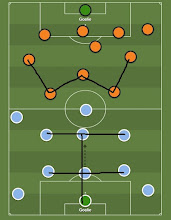Southeast Asian teams have never been highly
rated as the favourite in Asian Cup history, despite their progress.
Southeast Asia has been considered one of the
most progressive regions in the world. Yet, when it comes to football
development, it is quite far behind, despite the popularity of football among
their people.
In AFC Asian Cup history, seven teams have made
appearances since the first edition of the tournament in 1956. Four of
them—Thailand, Vietnam, Indonesia, and Malaysia—are playing in the upcoming
2023 Asian Cup in Qatar. However, only two of them have made their mark in this
continental competition.
This year’s Asian Cup was supposed to take place
in China last summer. Yet, it kicks off this weekend on January 12 instead, due
to Qatar’s climate. China opted to relinquish their hosting rights for the sake
of their zero COVID-19 policy. The AFC finally named Qatar as the new host in
October 2023.
Here is the ranking of all Southeast Asian
teams’ performance in AFC Asian Cup history based on how far they have reached
the stages.
Indonesia, Malaysia, and the Philippines
These three nations have never been able to go through the knockout stage of the competition. Indonesia qualified four times consecutively from 1996 to 2007 before sealing their place in Qatar in 2023 this year. Their best performance was probably their last appearance in 2007, when they became the co-host. Being grouped with Saudi Arabia, Bahrain, and South Korea, Bambang Pamungkas and Co. managed to pick up a 2-1 win over Bahrain at the opener. Their striker, who was known for his header goal and aerial duel, Bambang Pamungkus, scored the winning goal.
Unfortunately, they suffered
narrow defeats against the remaining stronger sides, the former champions Saudi Arabia and South Korea, consecutively. They only
sat third at the table. It might have resulted differently, should the English boss, Peter Withe, who was prematurely dismissed before the tournament began.
Malaysia have played their fourth in the 2023
edition this year. Yet, their form was still expectedly unimpressive as they
failed to advance. Their best result was in the 1980 edition, when the Malayan
Tiger almost went through the knockout stage. Back then, only 10 contestants
were in the tournament. They were seeded with South Korea, Kuwait, Qatar, and
the UAE. Malaysia surprisingly snatched a 2-0 win over UEA and held Qatar and
South Korea in a tie. Sadly, their 3-1 loss to the host Kuwait only placed them
on the third row of the table, trailing only one point behind the group’s
runner-up.
Meanwhile, the Philippines only qualified once
for the 2019 edition. Unfortunately, they were hapless against China,
Kyrgyzstan, and South Korea, scoring only one goal and conceding seven goals in
their sole appearance of the tournament. The Philippines were at the bottom of
the table.
Vietnam
Vietnam is currently the most progressive
country in Southeast Asia. They have made their fifth appearance in the Asian
Cup this year, with impressive results in the previous four editions. Vietnam
reached the quarterfinals in the 2019 and 2007 editions and went through to the
final four in the first two editions of the competition. Back in 1956 and 1960,
they were still playing as South Vietnam and advanced to the final four. It was
a common format for continental tournaments in the past, including the UEFA
EURO and Copa America.
Their last achievement in 2019 was definitely
worth remembering compared to what they did in 2007, when they became the
co-host. Park Hang-Seo’s men progressed from the preliminary round as one of
the best in third place and eliminated Jordan on penalties in the round of 16.
Unfortunately, Que Ngoc Hai and Co lost 1-0 to the eventual runner-up, Japan,in the last eight.
Cambodia
Cambodia had one fantastic performance in the
Asian Cup. They only qualified once in 1972 as the region representative
alongside Thailand, the tournament host. At that time, Cambodia was known as
the Khmer Republic.
In the final round, their impressive form
endured as they progressed to the semifinals. The Khmer Rep routed Kuwait 4-0
to advance as a group runner-up under South Korea. Their surprise came to an
end after losing 2-1 to Iran and another defeat from the host, Thailand, on
penalties in the third-place playoff.
Thailand
Thailand has qualified the most times for the
AFC Asian Cup compared to their neighbours in the region. They have played in
the final round eight times, including in Qatar 2023 this year.
The War Elephants’ best result was surely in
1972, when they became the host for the first time. They won third place after
beating Khmer Rep on penalties. At the group stage, they were lucky to advance
to the semifinals without a single win. In the group consisting of only three
games, Thailand finished second due to goal difference after only suffering a
narrow 2-3 loss to Iran and sharing spoils in a 1-1 draw against Iraq, who
succumbed to a 3-0 defeat while taking on Iran. In the semifinals, their
fortunes ended after failing to beat South Korea on penalties.
Meanwhile, in the 2019 edition, Thailand managed
to get through to the round of 16 despite their humiliating 4-1 defeat at the
opener. Their narrow 1-0 win over Bahrain and 1-1 draw against the UAE helped
them finish second at the table. Sadly, they were unable to ease past China at
the next stage.
Myanmar
Last but not least, there was Burma, Myanmar’s
old name, as the only Southeast Asian team to be the runner-up in the
tournament. It was their sole appearance in the 1968 edition. At that time, the
competition used a round-robin format in the final round, involving five teams.
They snatched two victories over Hong Kong and Israel, which was still in the
AFC at the time. They shared spoils against Taiwan but lost to the host and
eventual winner, Iran. Myanmar has yet to qualify again ever since.


Comments
Post a Comment